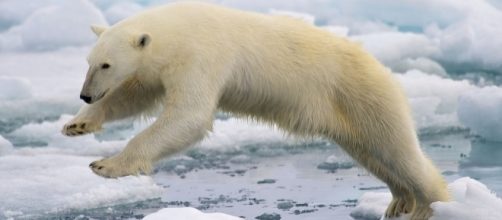In what one zoologist is calling “fake news,” the US Fish & Wildlife Service (USFWS) announced the final version of a draft report that climate change is the chief threat to polar bears. Released yesterday, the Conservation Management Plan (CMP) is a wide-ranging report to help save the Arctic polar bear as warmer temperatures eat away at their sea ice. And media outlets took the bait and ran misleading headlines using a recycled report from mid-2015.
According to Dr. Susan Crockford, an adjunct professor at the University of Victoria, British Columbia and a zoologist with 35 years’ experience, the USFWS is deliberating deceiving the public with phony animal survival predictions.
In the last 50 years, their populations have nearly doubled, with the IUCN Red List assessment report showing an estimated 22,000-31,000 bears in the Arctic region alone.
Fake news on polar bear survival predictions is political posturing https://t.co/2McohzZu0X pic.twitter.com/WwzWxw1skM
— Susan Crockford (@sjc_pbs) January 9, 2017
Recycled report
This is the same report that was distributed in mid-2015 in preliminary draft form, but little has changed and key information is still wrong or missing. Crockford doesn’t think it’s a coincidence the report is being “recycled” ahead of President-elect Donald Trump’s inauguration and used for political machinations.
That’s because outlets like the “NY Times” wrote Trump campaigned he would “withdraw the United States from the Paris Climate agreement” despite the USFWS praising the accord in the report, saying the climate agreement was a bulwark to protect the animal’s continued survival.
Human-driven global warming is biggest threat to polar bears, report says https://t.co/AP6X56wfMZ pic.twitter.com/2pCj8a9VgU
— The New York Times (@nytimes) January 10, 2017
Bad timing
But the December UNFCCC Paris Climate Agreement took place in December 2015, which happened after the draft report was released. And it took effect in Nov. 2016 after enough signatories ratified the accord. Most of the mainstream media outlets also didn’t list the current polar bear population counts, or when they did, got the numbers wrong, Crockford adds.
Also missing from the USFWS report was that since 2007, summer sea ice in the Arctic declined to levels that experts said wouldn’t happen until 2050. But despite the decreased summer sea ice, two-thirds of polar bears didn’t disappear as anticipated by USGS biologists.
It was this failed prediction that got them listed as ‘threatened’ under the Endangered Species Act (ESA).
Biggest threat to polar bears reconsidered https://t.co/UmZ8GyjuFQ pic.twitter.com/hNrzEn3QMG
— Susan Crockford (@sjc_pbs) February 27, 2016
Biggest threat
The USFWS also fails to note in the report that recent declines in population size in the Southern Beaufort Sea region was not from reduced summer sea ice, but rather thick spring ice from 2004 to 2006. That’s because polar bears do the bulk of their feeding during the springtime, and have an occasional nosh in the summer and fall. The thick ice during those years made it more difficult for the bears to get at the fat baby ringed seals.
Obama’s legacy
This leaves many critics speculating the report is President Obama’s ham-handed way of cementing his climate legacy by pushing out more propaganda in his final days. As Crockford points out, this “recycled report” came out prior to Dec. 2015, but that hasn’t stopped major news outlets from tying it into a Trump presidency, the Paris accord, and CO2 emissions.
The CMP even came with a price tag the USFSW says will help the polar bears recover (even as their populations flourish): $13 million a year.

